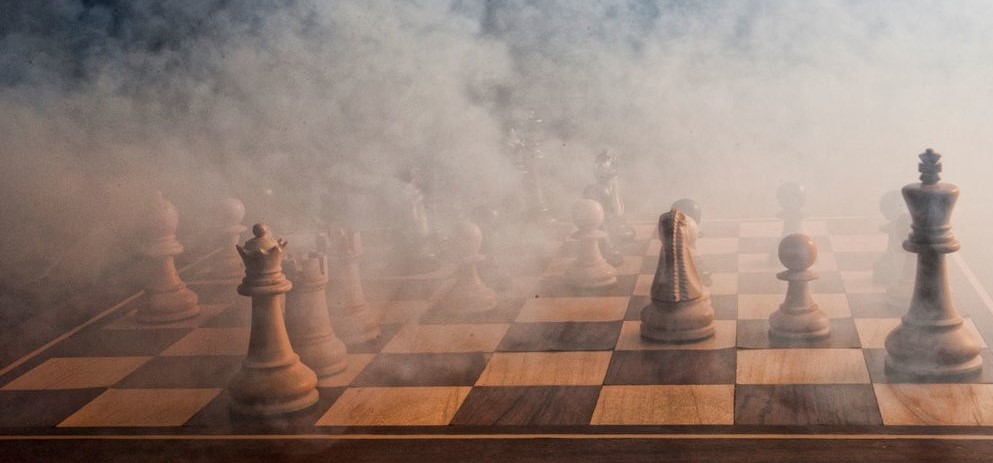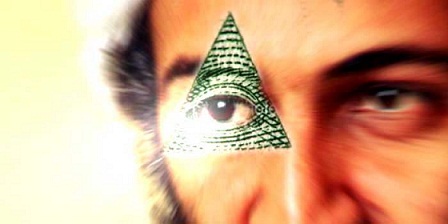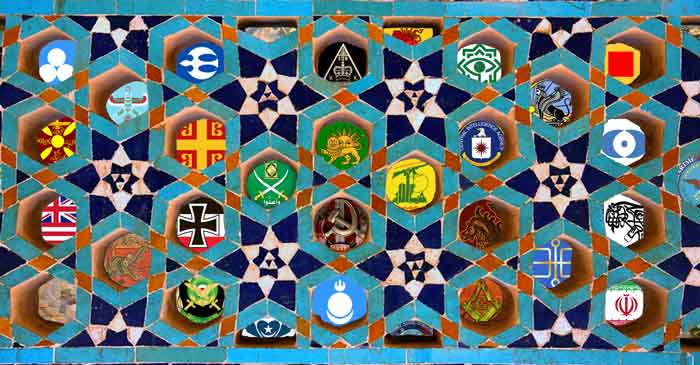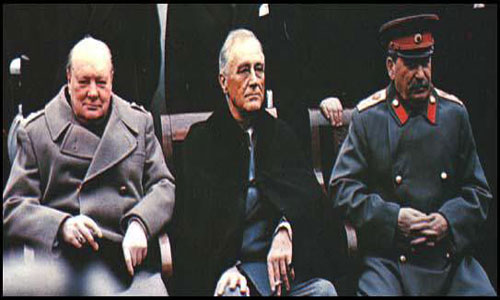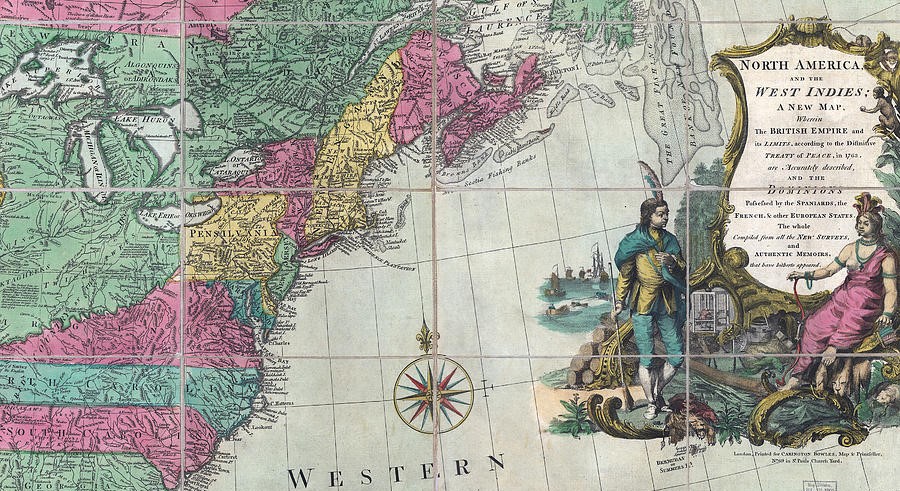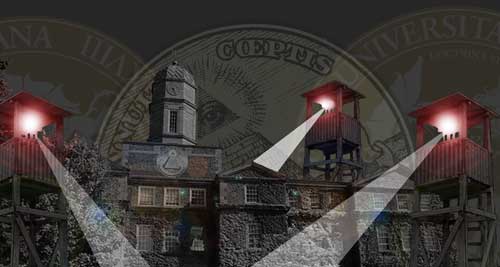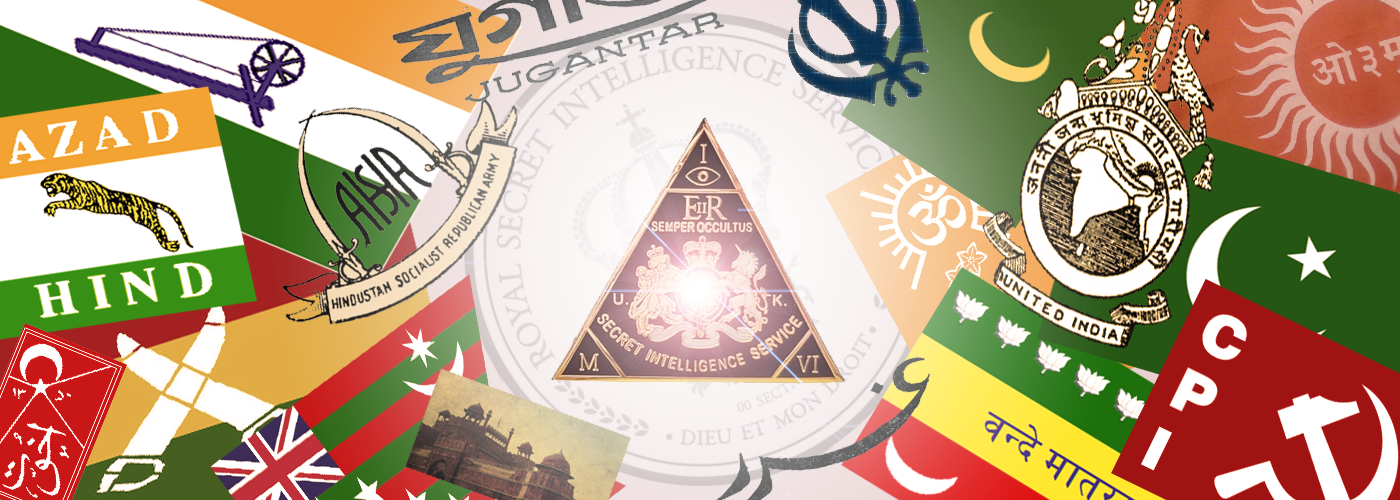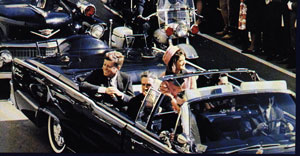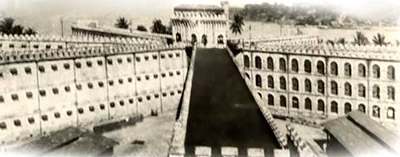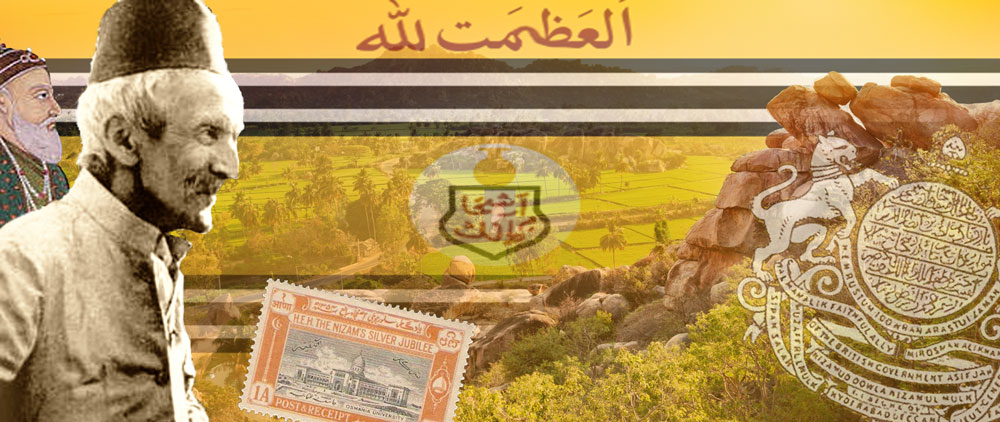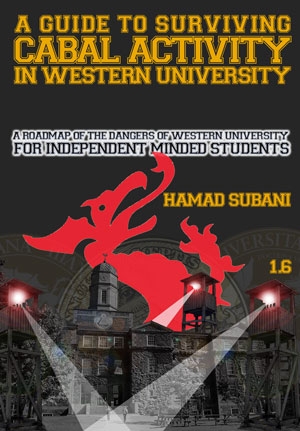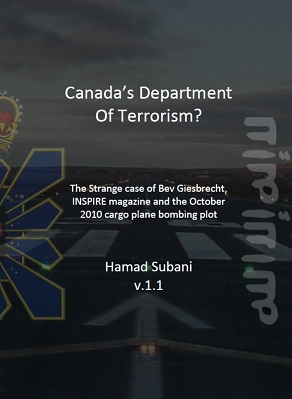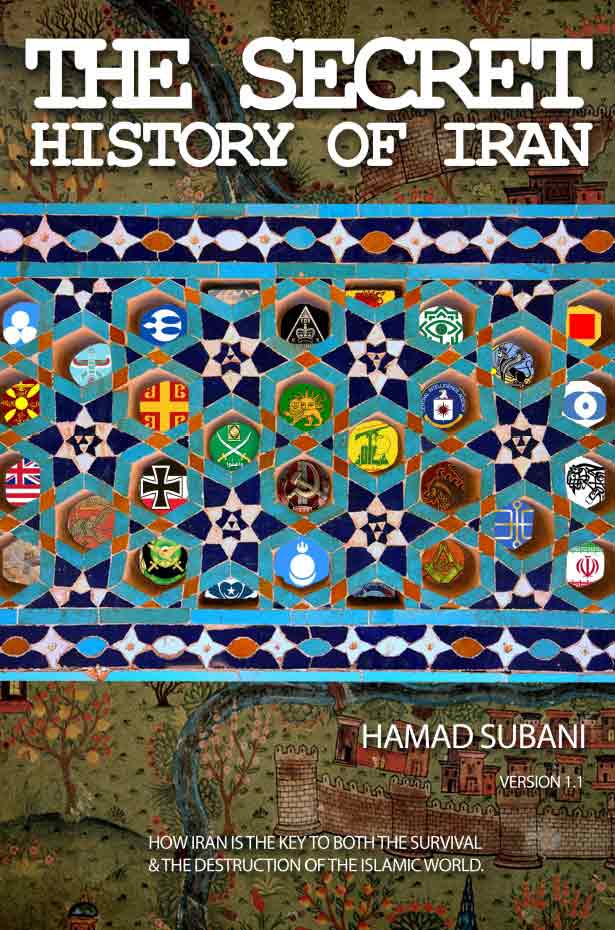
How the Blueprint Unfolded Part I – The Bengal Front
Going back to the stages in the reconstructed “Original Blueprint,” here is some detailed analysis on how they actually unfolded.
When we refer to the certain “Freedom Movements” being Spook Ops, it is important to note that:

- Violence against British rule was indeed justified (although Gandhi would differ) based on the simple fact that they had positioned themselves as a public enemy. Throughout history, people have dealt with unpopular rulers. The Spooks intended to recycle this legitimate resentment to their own ends.
- Of the locals who participated in compromised “Freedom Movements,” Spooks and their operatives may be less than 5% of the total participants. But they were in prominent positions, guiding the movements every step of the way. They had to take public positions because that was the only way they could take credit when the British left. But again, this created a paradox. While they could be in public positions, they could not publicly associate with the violence committed by their followers. Otherwise their followers would get suspicious as to why the British did not hang them.
- All of the non-local Spooks who participated/coordinated Freedom Movements will always be hidden from history. There were numerous British-Phoenician masterminds who coordinated with their Indian counterparts. Many such hidden masterminds were also American-Phoenician, operating out of places like Stanford University and Columbia University.
- The most telling feature of local Spook leaders and participants among the “Freedom Movements” is that unlike ordinary participants, they do not suffer the wrath of the British despite being neck deep in political violence. They somehow manage to ‘escape arrest because of lack of evidence’/ get pardoned/get reduced sentences etc.
- In many cases, genuine freedom fighters take the fall for Spook leaders and end up getting hanged/shot or going to prison. Later, we see entire “Freedom Movements” being imploded and thrown under the bus to protect their Spook leaders, with hundreds of Freedom Fighters being imprisoned to cover up for them. A cursory look at what happened to movements connected to Aurobindo and the Ghadr Party are telling.
- In many cases, followers willing to testify against them, or followers who know (or saw) too much end up getting killed, even in the security of British jails.
- When Spooks and Spook leaders do get charged by the British,
- They are sometimes sentenced to small prison terms in India. They do have to publicly go into jail and later be publicly “released,” to satisfy the curious. This is later propagandized to advance their Freedom Fighter cred.If a small prison term would look too suspicious because of the nature of the charges, then they are sent to the Cellular Jail in the Andaman Islands for life. Later, their sentence gets mysteriously commuted and they return after a pardon. But there is reason to believe that they were never in the actual prison. A remarkable feature of the new jail cells was that no prisoner could see his neighbour, and unlike before, the prisoners had no social life. This was done so that the crypto-Phoenician leaders could be sentenced to languish in the Cellular jail and build some “Freedom Fighter” cred whereas in reality, they could be living it big in neighbouring Ross Island, or be on a tour Europe in First Class. Of course, they would be trotted into the Cellular Jail occasionally, usually on the occasions when all the other imprisoned freedom fighters were engaged in group work, so that they could build some “Freedom Fighter cred. They also got to circulate their writings among the genuine freedom fighters imprisoned there. With that being said, of the list of known prisoners in the Cellular Jail after its construction in 1909 (which again, is a small fraction of the actual number of prisoners), I believe that special Spook prisoners are less than 3%. However, they are fairly prominent.
- In some circumstances, we are told they were hanged in Indian gallows. And instead of a large funeral, their bodies are secretly cremated and the ashes are dispersed. But again, British Intelligence can arrange for everything, from death certificates and false witnesses to fake cremations/burials. Any hanging of Spooks or Spook leaders taking place in British Punjab should be treated with suspicion.
- Spook leaders and participants are almost always of crypto-Phoenician origin. They are never commoners. Later, autobiographies are created, and Wikipedia entries are edited, to make it appear as if they were commoners, who stood on their own feet since they were kids.
- Many come from wealthy, and at times, aristocratic families, who always benefited from the British rule, and experienced an upward swing of fortune after 1857. Many attend Spook schools in India. Many get higher education in London, and hang out at the India House. Despite the fact that the cost was prohibitive to 95% of the citizenry of British India.
- A select few even hang out in USA, despite the fact that even the sea journey itself was unaffordable for 98% of the citiznery of British India back then. In USA, they hang out at University campuses such as Stanford, Columbia etc. And places like San Francisco, Seattle and New York. Remember that this was a time when colored people faced all sorts of open discrimination and barriers. But Spook leaders always have their connections, even in these faraway places.
- Just because a lot of well-intentioned and patriotic people got entrapped in fake “Freedom Movements” which later imploded does not make their sacrifices any lesser. They will have the opportunity to testify against those who betrayed them on one big day. Their status will be way higher than those who sat on their asses and did nothing. This also applies to Freedom Fighters who allied with Communism, because in some places, only Communists were talking of social justice. A good example of this phenomenon is Virendranath Chattopadhyaya. The Phoenicians realized he was too independent minded to advance Soviet agendas, so British Intelligence tried assassinating him. When that failed, he was prevented from returning to free India as he would become a competitor to other planted Communist leaders. We are told that he disappeared in Stalin’s purges.
- On the other hand, those who collaborated with the British, or worse, participated in violence against Freedom Fighters are never to be forgiven. They can be assured of a special place in hell.
Just because a lot of well-intentioned and patriotic people got entrapped in fake “Freedom Movements” which later imploded does not make their sacrifices any lesser.
The Untouchable Aurobindo

While Aurobindo Ghosh later slipped into obscurity, it seems this man was predesignated to become a major leader of post-British India. He came from a family of elites who were extremely close to the British. His maternal grandfather was a “Bengali” writer considered responsible for introducing classical Western elements into Bengali literature. He in turn is closely connected with Raja Ram Mohan Roy, one of the early founders of the Brahmo Samaj, who worked hard to Anglicize Hindu society and make it more manageable for control like Western religions, all in the name of reform. Later, another derivative organization called the Arya Samaj would emerge from the Spookopolis’ of Punjab and start pursuing more reactionary ideas, to supplement the Partition project.
Aurobindo frequently hung out at the Spookopolis of Baroda. One of Aurobindo’s companions, Jatindra Nath Banerjee received military training at the Spookopolis of Baroda. He even served as a bodyguard of the spook-king of Baroda. Jatindra Nath Banerjee later became a prominent member of the Anushilan Samity (which was inaugurated in Dhaka in 1903).
After Cambridge, Aurobindo returned to India to join the State Services of the Spookopolis of Baroda. He became a vice-principal of Baroda College. Aurobindo established contact with Bal Gangadhar Tilak a Chitpavani Brahmin, who along with two other leaders, would later emerge as the most vocal proponents of the Partition on the Indian side. He also had contact with the Irish Sister Nivedita. The real name of Sister Nivedita was Margaret Elizabeth Noble (As in Alfred Noble, the explosives magnate who founded the Noble Peace Prize). We are told that she came to India and became a disciple of Swamy Vivekananda, and became involved in the revolutionary groups of Aurobindo out of the goodness of her heart. The Founder of the Arya Samaj, Swamy Vivekananda was a Freemason, and some accuse him of presenting the teachings of a genuine Indian mystic, Ramakrishna Paramahansa, in the flavour of Advaita Vedanta, which in turn is a repackaging of Buddhism.

Under the influence of Aurobindo, another Bengali activist named Motilal Roy founded an organization named Prabartak Sangha. To quote,
The Sangha was founded with the aim of nation building which it sought to achieve through the social and economic upliftment of the masses. It ventured into business, ran educational institutions and established cultural centres to spread the message of its founder. This was also a popular shelter of Indian freedom fighters at that time.
All this was under the nose of the British Empire! Later we find the assets of the Prabartak Sangha being divested among Spook banking families of independent India. Another associate of Aurobindo was a Bengali industrialist who founded the Life of Asia Insurance Company.
Aurobindo’s younger brother, the London born Barin Ghose, also received military training in the Spookopolis of Baroda. He would later start a revolutionary organization named Jugantar, as an inner circle of the Anushilan Samity.
It seems a lot of revolutionary activity in Bengal can be traced to the French-controlled town of Chandernagore, which was outside British jurisdiction. The following are some of the freedom fighters associated with this town:
- Kanailal Dutta, Bengali revolutionary. He was reportedly hanged after killing a key witness who was about to testify against Aurobindo.
- Rash Behari Bose, Bengali revolutionary. He established links between Indian freedom fighters and Imperial Japan.
- Motilal Roy, Bengali revolutionary, journalist, spiritual leader.
- Shrish Chandra Ghosh, Bengali revolutionary
- Manindra Nath Nayak, Bengali revolutionary
Aurobindo started a Bengali newspaper called Bande Mataram with Bipin Chandra Pal to take his revolutionary views public. In 1907, Aurobindo almost got arrested by the British, but he was let go by the British after Bipin Chandra Pal took the fall for him by declining to depose. Pal was sentenced to six months in prison. And it could not be legally established that Aurobindo was indeed the editor of the newspaper. Later Pal later joined the Congress. But he opposed Gandhi’s role in the Congress, as well as his non-cooperation movement. Pal resurfaces later as a member of the Lal Bal Pal trio, the biggest advocates of the Partition on the Indian side.
The judge who sentenced Bipin Chandra Pal and who almost managed to sentence Aurobindo was Douglas Kingsford. Soon enough, he became the target of assassination. This assassination attempt seems to have been coordinated by elements within the British. For example, the would-be assassins somehow knew that Kingsford would be exiting a Club at Muzzafarpur (Bihar) at a certain date and time. And it seems the wife and daughter of a British spook-historian named Pringle Kennedy[1]Pringle Kennedy was a Spook-historian, who wrote maligned, fictitious accounts of the Mughals to create tensions between Hindus and Muslims. The Kennedys are Phoenician royalty. had arranged to play bridge with him. Was this duo coordinating with the assassins? In a rather poetic twist of fate, Kingsford escaped death and the assassins instead bombed the carriage carrying the wife and daughter of Pringle Kennedy, killing both. It seems their carriage was near-identical to that of Kingsford, and they left the club right behind his carriage. This became known as the Alipore Bomb case.
In the Alipore Bomb case, Aurobindo was expected to get the death penalty but got acquitted after the chief prosecution witness Naren Goswami was found murdered within the jail premises! The murderer was none other than Barin Ghose, the brother of Aurobindo. To quote,
On 29th August 1908, Kanailal Dutt feigned abdominal colic and gained admission to the Jail hospital, from where he sent word to Naren of wishing to turn approver, along with Satyendranath Bosu. Naren, believing the ruse, walked into the Hospital ward to meet the duo with the jail overseer. Armed with the two revolvers smuggled in at Barin’s request, Sen and Dutta chased Goswami down the jail corridors. The overseer accompanying Goswami, Warden Higgins, attempted to overpower Dutt but was shot through the wrist. Another overseer named Lynton tried to overpower Bose, but the latter broke free. Both Bose and Dutt shot Goswami multiple times, hitting his hip and piercing his spine, wounding him fatally. Bose and Dutta, firing nine shots in total into Goswami’s lifeless body, gave themselves up once they realised Goswami was dead. Dutta later pleaded guilty, was convicted and hanged. Bose was initially declared not guilty by jury, but the verdict was returned to the high court, which returned a guilty verdict and awarded him the death sentence.
Barin Ghose’s death sentence strangely gets changed to life imprisonment in the Andamans. Despite being a dual British and Indian national, he did not request to be tried as a British national, which would have resulted in a more lenient sentence, and in a British prison, not a British-Indian prison. In court he made a confessional statement taking entire responsibility,[2]S.N. Agarwal. The Heroes of the Cellular Jail Rev. Edition (New Delhi: Rupa) 94. so as to prevent additional investigation. Strangely enough, he allegedly escapes the Cellular Jail in 1915 and joins Bagha Jatin in Balasore. This is downright unbelievable. He is allegedly caught and sent back to the Cellular Jail, but is released in 1920. (assuming he was in the Cellular Jail). Interestingly, the initial arrests on 2nd may 1908 netted 33 initial suspects. The number 33 is a Spook marker, indicating that the whole bombing was a Spook operation, and the same Spooks were running the investigation.
The Deputy Superintendent police officer investigating the death of the chief prosecution witness Naren Goswami also ended up being murdered, indicating a huge coverup. To quote,
Shamsul Alam was Deputy Superintendent and intelligence officer in Bengal Police investigating the murder of Naren Goswami, crown-witness in the Alipore bomb case, and other murders including those of Ashutosh Biswas, advocate of Calcutta High Court in charge of prosecution of Goswami murder case, and of Naren Bannerjee, the police officer who arrested Khudiram Bose. Alam had uncovered the underlying Bengali revolutionary network of the Anushilan Samiti that linked the murders and other robberies in this time, and at the time of his own murder in the hands of Biren Dutta Gupta, Alam was preparing to consolidate the charges to bring them all to trial in a single case.

One of Aurobindo and Barin’s followers was Jatindranath Mukherjee alias Bagha Jatin. He was a genuine patriot who ended up being used to cover the activities of the hidden masterminds. In 1907, Jatindranath Mukherjee was sent to Darjeeling for some special training. Coincidentally, Darjeeling also happened to be a hub of British Intelligence. Its high altitude and cool climate had made it a top holiday spot among British officials. Since Jatin was not involved in the Alipore Bomb Case of 1908, he went on to assume leadership of Jugantar. Jatin then started being sponsored by a mysterious Scottish “businessman” Daniel Hamilton, who leased land to him to build shelters where those not yet arrested for violence could be accommodated. It seems they were also getting military training, and some were even sent abroad for advanced military training! All of this of course, under the nose of the British Empire! Jatin even received a promise of arms from the German crown prince when he visited Calcutta. Jatin then moved to a town called Balasore on the Orissa coast, where German arms were intended to be received via clandestine shipments. It was at this town where he was killed in a gunfight with British-Indian forces in 1915. There are theories that he was killed to cover up the involvement of Aurobindo and Barin, which if investigated publicly, would lead to straight to British Intelligence.
Jyotish Chandra Pal who was with Bagha Jatin in his last moments was allegedly doing a rendezvous with a German submarine at Balasore.[3]Vinayak D. Savarkar, The Story of MY TRANSPORTATION FOR LIFE (A Biography of Black days of Andamans) Trans. From the Marathi original Maazi Janmathep by V. N. Naik (Ebook by Chandrashekhar V. Sane, 2016) p. 280 <https://library.bjp.org/jspui/handle/123456789/292> Accessed 12/12/2022. He was the only one among those captured to escape the death sentence. We are told that he went insane at the Andamans and was discharged. He died on 4th December 1924 at Berhampore.
One of Jatindranath Mukherjee’s close associates was an industrialist named Jitendra Nath Lahiri. He was a key collaborator with German Intelligence. He even sent many Bengalis to Germany to learn bomb-making.[4]S.N. Agarwal. The Heroes of the Cellular Jail Rev. Edition (New Delhi: Rupa) 177. He was on board the Maverick, the vessel heading for the Orissa coast with German arms and ammunitions. However, owing to the fall of Bagha Jatin, this mission was abandoned at the Bay of Bengal. But Jitendra Nath remained untouchable.[5]Jitendra Nath Lahiri later became a member of the Indian parliament. He would go on to establish India’s first belting company, the Bengal Belting Company in 1929. With the Phoenicians planning a violent struggle between the British and their subjects, the Indian side would need automobile engine spares, and only the British supplied belts back then.
After the Alipore Bomb Case, it was decided to quietly retire Aurobindo, as there was too much evidence against him, which would only draw suspicion. Freedom fighters would see him as being protected by higher powers, further damaging his credibility. And so, Aurobindo withdrew to the French-controlled territory of Pondicherry, where he would be spared from arrest warrants coming from British India. The French welcomed him in every possible way, allowing him to take over huge tracts of land for an ashram and later a town called Auroville. Here, Aurobindo dabbled in the occult and Jewish Kabbala with an uber-creepy Jewish woman named Mira Alfassa. It seems they were trying to invent a new version of Hinduism, which was to be imposed on India after the Phoenicians consolidated. I won’t get into the details but it is important to note that orthodox Hinduism is a theist religion. Aurobindo et all were trying to push it in the direction of atheism by recycling the old Phoenician argument that God(s) is a figment of the human mind (and therefore the human mind can be elevated to a competitor of God(s)). Anyone falling into this trap gets closer to atheism, and with atheism comes Communism. Concurrently, there was a program to merge Buddhism with Hinduism. And Buddhism is a Phoenician wet dream, as it calls people to reject their worldly rights and holdings voluntarily.
As a consolation prize an inside joke, the departing British granted India independence on Aurobindo’s birthday (15th August). This shows that Aurobindo was originally intended to be a major leader of independent India, not Gandhi, or later, the Nehru family. Aurobindo continued to operate out of French-controlled Pondicherry. And it was assumed that the French would continue holding their colonial ports. But Nehru not being stupid used his military to merge French territories with India in 1954 rather than let the risk continue. Some say he did this to counter Aurobindo’s ops emanating from Pondicherry. Nehru would later do the same to Portuguese territories in India.
The Globetrotting M.N. Roy
One mysterious person associated with the Anushilan Samity was a “spiritual leader” named Mokshadacharan Samadhyayi. After being at the forefront of revolutionary activity for a decade, he gets convicted of Insurance fraud in February 1914 at Benares! After that, he literally vanished from the face of the earth.

Closely associated with Barin Ghose and Mokshadacharan Samadhyayi was M.N. Roy, who later emerged as the founder of the Communist Party of India. He was secretly transported to USA by German Intelligence, using a fake identity. He then shows up in the Spook Hub of Palo Alto, California. There, he dates Evelyn Leonora Trent, another obvious Spook. In New York, they gain the confidence and support of Lala Lajpat Rai, who supports them with money. Later, Lala Lajpat Rai emerges in India as part of the Lal Bal Pal trio, the biggest supporters of the Partition on the Indian side. It is unclear what common ground Lala Lajpat Rai would have with a Communist like Roy. Roy was organizing a meeting for Lala Lajpat Rai on the campus of Columbia University when he got arrested for entering USA as an imposter. But he is mysteriously let go, and escapes to Mexico. He is personally assisted in this escape by the President of Stanford University! To quote,
Evelyn Trent then approached her teacher and friend, Dr. David Starr Jordan, President of the Stanford University, at Palo Alto, for help. Dr, Jordan was prepared to make it easy for Roys to find a refuge in the neighboring Mexico; and, he readily gave them a letter of introduction to the Governor of the State of Yucatan , General Salvador Alvarado, a powerful person in Mexican politics . That indeed was an immense, immeasurable help.
In Mexico, he is financially assisted by “German Intelligence,” where he and Evelyn, still using fake aliases, found the Communist Party of Mexico, the first recognized Communist Party formed outside Russia! Evelyn Leonora Trent emerges as the director of another Spook organization called the Friends of India League.

Agnes Smedley. Why was this American Jewess palling around with Indian and Chinese Communist leaders? Hint: She is dressed as a Proletraiat but she aint. Spoiler: Another fake Indian leader Herambalal Gupta mistook her for for a slut and raped her. Apparently, he did not get the email, no wait, the memo, that she was Phoenician tier leadership material. Spookery comes with occupational hazards.
In Mexico, M. N. Roy was assisted by another American woman and Soviet spy, Agnes Smedley, who earlier had been palling around with feminist Henrietta Rodman and birth control activist Margaret Sanger. It seems Germany was financing their activities in Mexico. Another “freedom fighter” Herambalal Gupta, teams up with them in Mexico City. He was later confirmed to be a British Intelligence operative. He also gets the dubious honour of having raped Agnes Smedley.
M. N. Roy and Evelyn attended the Second Congress of the Communist International held in Moscow during spring of 1920 under Mexican diplomatic passports provided by the Mexican President Carranza, in which their names were given as Senor and Senora Roberto Alleny Villa Garcia. While on the way, they stop at Berlin and hang out with the Berlin Committee, which is organizing a jihad against the British in Afghanistan (Another Phoenician plot which will be discussed later). Before leaving Berlin for Moscow, Roy drafted what he called the Indian Communist Manifesto. The manifesto was signed by Roy, Abani Mukherjee and Evelyn Trent. In Moscow, they come in contact with even more Spooks. To quote,
Evelyn, while at Moscow, came into contact with various other Indian leftist and nationalist leaders such as, MPBT Acharya, Virendranath Chattopadyaya and also with Agnes Smedley, who was indeed the driving force of their delegation .
MPBT Acharya was an Aiyangar Brahmin who seems to be involved in all Spook projects associated with the Freedom movement. He married a German-Jewish woman.

Evelyn Trent. Why was this American Jewess, born to a wealthy Utah family, palling around with Indian Communist leaders and writing anti-Gandhi articles under an Indian name? Hint: If Roy became the leader of post-British India, she would become the Phoenician crypto-Queen, quite an upgrade from her life in Utah. Its called hedging your bets.
In March 1918, Smedley was finally arrested by the U.S. Naval Intelligence Bureau and indicted for violations of the Espionage Act. Somehow she got around, and continued helping Indians later trapped in the Hindu German Conspiracy case. Smedley had a sexual relationship with Richard Sorge, a major Soviet spymaster in Japan. And it seems she entered into a relationship with Virendranath Chattopadhyaya to keep an eye on him (on behalf of Roy?). She later ends up in China, actively supporting the Communists. Her ashes were buried at the Babaoshan Revolutionary Cemetery in Beijing in 1951 (assuming she really died at 58). This cemetery is reserved for Communist Chinese National Heroes.
Later, Evelyn along with Roy were among the seven signatories to the document which established the Communist Party of India (CPI) at Tashkent on 17 October 1920. Roy established a military school there for new cadres. Evelyn then starts publishing articles in Indian periodicals as Shanta-Devi, attacking Gandhi. Roy and Evelyn were later arrested in France, but Roy somehow escaped to Luxembourg. At this point, Evelyn disappears from Roy’s life. Roy never mentions her. And from 1925 onwards, her name stops appearing in publications related to Indian Communist Parties. In 1927, Evelyn was back in USA, writing for newspapers like the San Francisco Chronicle and the Herald Tribune. Would a real newspaper hire a Communist fugitive?

Roy later returns to British India and is allegedly arrested one year later. He is released in 1936, and moves to the British Spookopolis of Dehradun with his new wife, a German-Jewish Communist named Ellen Gottschalk. By then Roy had seen that Communism did not stand much of chance compared to Gandhi and his ideas. So he advised his followers to infiltrate the Congress and try capturing the Constituent Assembly, which would draft the Constitution of India.
M. N. Roy died in 1954 at the mere age of 66. Or did he exit his public life and persona to retire somewhere else? Six years later, Ellen Gottschalk ended up being “murdered” at the age of 52. Or did she too exit her public life to join Roy?
A Note on Subhash Chandra Bose (Netaji)
I have covered Netaji in an earlier post. In 1927, Bose became the General Secretary of the Congress party, and he had a promising future in it. He was even nominated for the role of President of the party. Bose’s growing stature in the Congress Party meant that a lot of Bengalis would follow him into the Congress Party. This had to be prevented as most Bengalis had been designated with Spook Movements. So rifts were manufactured between him and the Congress. Concurrently, the British started persecuting him. And concurrently, German Intelligence happily offered to ferret him out of the country.
Once outside the country, his biggest achievement was the organization of the Indian National Army with the help of imperial Japan. As you may be aware, Imperial Japan was another Phoenician project, with a limited shelf life. The Japanese were never serious about helping him. Since the Indian National Army (INA) drew recruits from the British-Indian military, this also opened a big conduit for British Intelligence. And British Intelligence inserted thousands of their operatives into the ranks of the Indian National Army The Phoenicians realized that Bose was too independent-minded to later on peddle Communism or work for Soviet goals. Therefore they had to keep his stature in check. Spooks within his ranks insured that the Indian National Army achieved not a single notable victory. After India became independent, it was too dangerous to let a genuine leader like Bose to return to India and offer his talents. Therefore, Imperial Japan arranged his secret transfer to the Soviet Union, where he was kept against his will. Despite the prevalence of spooks in the Indian National Army, many of its pioneers, such as Iqbal Shedai and Rash Behari Bose were genuine people.
The Japanese Invasion of Andaman Islands
For a more detailed account, please see this earlier article.
Imperial Japan (another Phoenician Project), briefly occupied the islands from 23rd March 1942 till October 1945. The Japanese would trot out Netaji on 29th December 1943 on the islands very briefly and would pretend to establish a Provisional Government for his Indian National Army. In reality, the Japanese were here to do the dirty work that the British could not have done on their own. It is thus no surprise that the British quietly evacuated the Islands to the Japanese without the slightest resistance. The British also started construction of an airstrip which was meant for the Japanese. We are told the Japanese would complete it. As we shall see, its purpose was to bombard the aborigines, whom the British were worried about.
Interestingly, when the Japanese invaded, they first established a presence on Ross Island, as if they were guarding it, and did not want others, specifically members of the INA to set shop in it. Were they guarding the secret tunnel to Port Blair? Even after India became independent, access to Ross Island was restricted for decades, and it still remains largely untouched.
The Phoenicians intended to completely destroy the Cellular Jail, now that they were done with it. The problem was that the British destroying it would alert everyone of the coverup. Therefore it was to be accomplished during the fog of the Japanese occupation. Only three of the seven wings remain today.
The British strategy of managing the Andaman and Nicobar Islands was to deliberately keep the native aboriginal populations in an isolated, primitive state, and to deny them any means for cultural development. That way, they would never make any future claims to the islands. But one group of aborigines known as the Nicobarese started showing advanced development and literacy. Add to that, a Sikh named Dr. Diwan Singh Dhillon became a fulltime volunteer in spreading literacy, medical aid and development among the aboriginals. This greatly angered the Phoenicians. But they could not use the British to openly stop the doctor.
The Japanese were tasked with killing Dr. Diwan Singh. They tortured him for 82 days before he breathed his last on 14th January 1944.[6]S.N. Agarwal. The Heroes of the Cellular Jail Rev. Edition (New Delhi: Rupa) 305.. The brief Japanese occupation was also a great opportunity for the Phoenicians to destroy the aboriginals, in particular the Nicobarese, who were showing advanced development. The Japanese deliberately tried to starve the aboriginals, using their airforce and military to destroy their already primitive infrastructure. On 4th August 1945, hundreds of aboriginals were rounded up and taken by ship to the remote Havelock island, and were thrown into the middle of the sea. But two or three managed to swim ashore and narrate the dreadful story.[7]S.N. Agarwal. The Heroes of the Cellular Jail Rev. Edition (New Delhi: Rupa) 306..
It seems that the more developed Nicobarese aboriginals were specifically targeted by the Japanese. Their literate and eminent persons were specifically tortured to death. Only the British could have supplied the Japanese with such detailed lists. A total of 91 Nicobarese were formally killed by the Japanese. We may assume thousands were informally killed through other means.
The Phoenicians knew that having Netaji’s INA cadres “liberate” the islands from the British was a bad idea, as they would now have a popular claim to the islands even after the British left India. But at the same time the Japanese could not deny the INA’s participation in the liberation of the Cellular Jail in the Andamans. And so, most of the INA cadres were detained by the Japanese in the Cellular Jail after being tortured and accused of being British spies. This is the only reason the Japanese allowed three wings of the Cellular Jail to remain standing. They were meant to house the INA in advance! These wings were to be demolished following the execution of the INA by the Japanese, but it seems that things got hurried in their withdrawal and these three wings still remain standing.
From what is known, almost 70 members of the INA were either tortured to death or shot in cold blood by the Japanese. Many more fled the Andamans.
When the Japanese would leave in October 1945, the British literally walked into the island again, which by now had not even a whimper of resistance.
The Red Fort Trials
After the Phoenicians had dealt with Netaji, they conducted some sham trials at the Red Fort just before independence (1945-46) to cover things up. The Spooks who may have participated in the disappearance of Netaji were to be rehabilitated as freedom fighters for future generations. To quote an earlier article,
Were the Red Fort trials of for prominent INA leaders after the disappearance of Netaji (1945-46) were staged? Were these four leaders, namely Shah Nawaz Khan, Habibur Rehman, Gurbaksh Singh Dhillon and Prem Kumar Sehgal operatives of British Intelligence? Why is it that the trials let them get away with rather lenient sentences whereas scores of lower ranking INA members had been happily executed by the British in the past? Were the trials an attempt to rehabilitate these four leaders in post-independence India and Pakistan by securing their reputation as freedom fighters?

If you have been following closely so far, we are back to the 1857 Spook Playbook! Remember the patriotic and simple-minded sepoys of 1857, who were sourced from Bengal? This time, 95% of the cadres of the Anushilan Samiti, Jugantar, and the movements tied to Aurobindo and M. N. Roy are again sourced from the patriotic and simple-minded people of Bengal! In fact, there were so many of them that it is estimated that more than 50% of those who ended up in the Andaman Cellular jail in this period (after some of the movements were later thrown under the bus by the Phoenicians) were Bengalis.
CONTENTS
- The Secret History of British India’s “Freedom Movements.”
- An Introduction to the “1857 Project”
- The 1857 Project as a Spook Playbook for later Ops in the Subcontinent
- Phoenician Spookopolis’ Across the Subcontinent
- A (long) note on Fazl-e-Haq Khairabadi
- The Strange Fate of Jhansi State
- Later “Freedom Movements” that follow the 1857 Rebellion Playbook
- How the Blueprint Unfolded Part I – The Bengal Front
- How the Blueprint Unfolded Part II -The Ghadr Party and the Punjab Front
- How the Blueprint Unfolded Part III -The Communalists
- How the Blueprint Unfolded Part IV – The Non-Cooperationists
- Conclusion; Revisiting the “Original Blueprint” + Epilogue: Reactivation!
| ↑1 | Pringle Kennedy was a Spook-historian, who wrote maligned, fictitious accounts of the Mughals to create tensions between Hindus and Muslims. The Kennedys are Phoenician royalty. |
|---|---|
| ↑2 | S.N. Agarwal. The Heroes of the Cellular Jail Rev. Edition (New Delhi: Rupa) 94. |
| ↑3 | Vinayak D. Savarkar, The Story of MY TRANSPORTATION FOR LIFE (A Biography of Black days of Andamans) Trans. From the Marathi original Maazi Janmathep by V. N. Naik (Ebook by Chandrashekhar V. Sane, 2016) p. 280 <https://library.bjp.org/jspui/handle/123456789/292> Accessed 12/12/2022. |
| ↑4 | S.N. Agarwal. The Heroes of the Cellular Jail Rev. Edition (New Delhi: Rupa) 177. |
| ↑5 | Jitendra Nath Lahiri later became a member of the Indian parliament |
| ↑6 | S.N. Agarwal. The Heroes of the Cellular Jail Rev. Edition (New Delhi: Rupa) 305. |
| ↑7 | S.N. Agarwal. The Heroes of the Cellular Jail Rev. Edition (New Delhi: Rupa) 306. |


